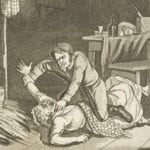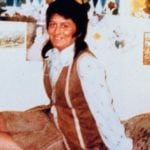 Mysteries
Mysteries  Mysteries
Mysteries  History
History 10 Surprising Stories About the Texas Rangers
 Humans
Humans 10 Philosophers Who Were Driven Mad by Their Own Theories
 Miscellaneous
Miscellaneous 10 Video-Game-Worthy Weapons and Armors from History
 Weird Stuff
Weird Stuff 10 Psychics Who Accurately Predicted Wartime Events
 The Arts
The Arts 10 Pieces of Art Inspired by a Broken Heart
 Health
Health 10 Science Fiction-Sounding New Medical Treatments
 History
History 10 Surprising Facts About the Father of Submarine Warfare
 Space
Space Ten Astonishing New Insights into Alien Worlds
 Weird Stuff
Weird Stuff 10 Bizarre Summer Solstice Rituals Still Practiced Today
 Mysteries
Mysteries Top 10 Haunting Facts About the Ghost Ship MV Alta
 History
History 10 Surprising Stories About the Texas Rangers
 Humans
Humans 10 Philosophers Who Were Driven Mad by Their Own Theories
Who's Behind Listverse?

Jamie Frater
Head Editor
Jamie founded Listverse due to an insatiable desire to share fascinating, obscure, and bizarre facts. He has been a guest speaker on numerous national radio and television stations and is a five time published author.
More About Us Miscellaneous
Miscellaneous 10 Video-Game-Worthy Weapons and Armors from History
 Weird Stuff
Weird Stuff 10 Psychics Who Accurately Predicted Wartime Events
 The Arts
The Arts 10 Pieces of Art Inspired by a Broken Heart
 Health
Health 10 Science Fiction-Sounding New Medical Treatments
 History
History 10 Surprising Facts About the Father of Submarine Warfare
 Space
Space Ten Astonishing New Insights into Alien Worlds
 Weird Stuff
Weird Stuff 10 Bizarre Summer Solstice Rituals Still Practiced Today
10 Cases Of Sibling Serial Killers
In the history of crime, it is rare to find cases where siblings have collaborated to murder. In some instances, though, siblings have carried out prolonged murder sprees and terrorized communities around the world. This article will examine 10 cases in which siblings have been convicted of serial murder.
10The Bondurant Brothers

Pete and Pat Bondurant are twin brothers who murdered a series of victims in Giles County, Tennessee in the 1980s. In 1986, a 24-year-old woman named Gwen Dugger was reported missing by her family in Ardmore, Alabama. After a lengthy investigation, the Bondurant brothers were arrested for her murder. At their trial, Pat’s wife came forward and testified that she had witnessed the two brothers rape, torture, and murder Dugger. Her body was then burned and left in the Elk River.
Despite the lack of physical remains, the Bondurant brothers were convicted of second-degree murder and given a sentence of 25 years in prison. During a police investigation of their parents’ house in Pulaski, Tennessee, a collection of human bone fragments were discovered. The evidence compelled the police to launch a series of investigations, as a result of which the brothers were convicted of separate murders.
Pat Bondurant was found guilty of murdering his co-worker, Ronnie Gaines, who was beaten to death and buried on the Bondurant property. At trial, Pete was charged with helping his brother dismember the body. In a different case, Pete Bondurant was convicted in the killing of his girlfriend, Terry Lynn Clark. Currently, the Bondurant twins are jailed in Tennessee’s Riverbend Maximum Security Prison. The brothers have been featured on the TV show Evil Twins.
9The Ranes Brothers

Larry and Danny Ranes are siblings who became serial killers at different times in their life. The Ranes brothers are rarely mentioned in articles that examine the most notorious serial murderers. The events started in spring 1964, when 19-year-old Larry Ranes fatally shot a man named Gary Smock in Kalamazoo, Michigan. Over the next two months, Larry robbed and killed a total of five people. By May 1964, he confessed to the crimes and was arrested.
Despite the confession of five murders, the state tried Larry only for the killing of Smock. He pleaded not guilty by reason of insanity, but he was sentenced to life in prison. He was later awarded a retrial, but he entered a plea of guilty and received a life sentence. In return for the plea, Larry was allowed to change his name to Monk Steppenwolf. Around the time of his retrial, Larry’s brother, Danny Ranes, made international headlines for carrying out a collection of violent murders in Kalamazoo, Michigan.
On March 18, 1972, Danny Ranes kidnapped, raped, and murdered a 28-year-old woman named Patricia Howk. In July, he teamed up with Brent Koster, and the two killed a pair of young girls. After Ranes and Koster murdered one more victim in August 1972, Koster confessed. He named Danny Ranes as an accomplice, and the two were charged with murder. Unlike his brother, Danny never confessed to the crimes, but he was convicted of four murders and given multiple life sentences.
In their childhood, the Ranes brothers were close. Danny later called Larry the “the only companion I had most of my life.” In a strange twist, Danny’s ex-wife went on to marry Larry in prison. In 1987, the serial killer brothers were given the pseudonyms Ralph and Tommy Searl in a book published by Conrad Hilberry. Since that time, the fake names have been used in some books and online articles.
8The Carr Brothers
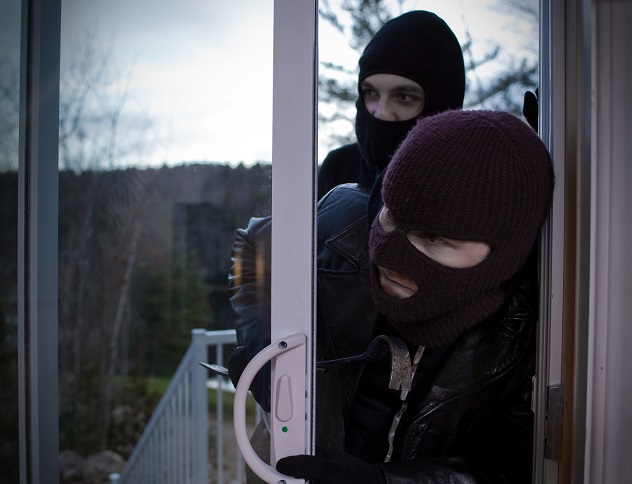
In December 2000, Reginald and Jonathan Carr carried out one of the most notorious killing sprees in the history of Kansas. The events began on December 8, when the brothers robbed Andrew Schreiber at gunpoint. During the attack, they forced Schreiber to withdraw money from his bank account, but they ended up letting him go. Ann Walenta wasn’t so lucky. On December 11, 2000, the Carr brothers fatally shot the 55-year-old woman as she attempted to flee the scene in her vehicle.
On December 14, 2000, the Carr brothers broke into a house occupied by five young people and proceeded to terrorize them. After entering the home, the brothers sexually assaulted the two women, beat the men, forced the couples to perform sexual acts on each other, sodomized one of the victims, tied them up, and enforced sexual humiliation. The brothers then robbed the group, took them to a remote area, and shot them all in their heads. After the shooting, the Carr brothers fled the scene, unaware that one girl—identified only as H.G.—had survived. It was later revealed that the barrette in her hair helped stop the trajectory of the bullet. H.G. described her attackers to police, and the Carr brothers were arrested and charged with the murders.
The events shocked the state of Kansas and became known as the Wichita Horror. Some people were outraged that the murders were not treated as a hate crime due to the fact that the brothers were black and all the victims were white. Eventually, the Carr brothers were convicted of 113 criminal counts and sentenced to death. Despite the horrific nature of the case, it received relatively limited US national coverage. As of 2014, the Carr brothers remain on death row.
7The Cook Brothers

Anthony and Nathaniel Cook are brothers who carried out a deadly killing spree in the area surrounding Toledo, Ohio for 17 months in 1980–81. In 1973, Anthony Cook committed his first murder when he raped and killed a 22-year-old woman named Vicki Smalls. Following the crime, Anthony went to prison on an unrelated burglary charge until 1979. After getting out of jail, he joined his brother Nathaniel and the two embarked on the murder spree.
In the early 1980s, both Anthony and Nathaniel Cook were employed as truck drivers and spent time traveling between states. In January 1981, the brothers raped and killed a hitchhiker named Connie Sue Thompson. In February, they tortured and killed a 12-year-old girl named Dawn Backes. Backes was kidnapped on her way home from school and murdered in the basement of a local theater. In September 1981, Anthony Cook attacked a couple named Todd Sabo and Leslie Sawicki. During the confrontation, Leslie phoned her father, Peter Sawicki, who arrived at the scene and was shot dead by Anthony Cook. Anthony was arrested for the murder of Sawicki and given a sentence of 15 years to life in prison.
In 1998, 17 years after Anthony Cook was arrested, DNA evidence linked the Cook brothers to a series of crimes and murders across the United States. Nathaniel Cook was finally arrested, and the brothers admitted to taking part in the murders of nine people. All of the victims were strangled, shot, or bludgeoned to death with objects such as baseball bats and concrete blocks. Anthony Cook was implicated in all nine murders, while Nathaniel only admitted to taking part in three. In return for the confession, Nathaniel pleaded guilty to two counts of kidnapping and one count of attempted murder. He will be released from prison in 2018. Anthony Cook received an additional sentence of 15 years to life in jail for the killing of Thomas Gordon.
6The Auto Brothers

In the 1980s, Auto Shankar operated a large collection of prostitution dens in the city of Chennai, South India. Shankar recruited his closest friends—including his younger brother, Mohan, and brother-in-law, Eldin—to build a criminal network in the area. The group regularly kidnapped young women from the streets and forced them into sexual slavery. Their activities caught the attention of authorities after nine young girls went missing over a six-month span in 1988.
In one case, Auto Shankar, Auto Mohan, and their accomplices got into a confrontation with three men after they attempted to remove one of the girls from the brothers’ L.B. Road Lodge. In response, Shankar ordered the three men to be murdered and buried. The families of the victims contacted the police, and a task force was organized to find the perpetrators. The police tracked down one of Shankar’s accomplices, Aari, who helped them locate members of the criminal organization and procure testimony against Shankar and his brother Mohan.
During the trial, it was revealed that Shankar was responsible for the deaths of six people over a period of two years. Inside his house, the police found a collection of photographs of him posing with crooked cops. The evidence sparked an internal investigation, and some of the officers involved were punished. Auto Shankar later made a daring escape from prison, but he was recaptured and found guilty of the murders. On April 27, 1995, he was hanged at Salem Central Prison. In August 1990, Auto Mohan escaped from Chennai Central Prison, but he was arrested in Pune on June 25, 1992. He was convicted of six murders and given a sentence of life in prison, which he is currently serving. Before his death, Auto Shankar made headlines by saying that he kidnapped sexual abuse victims for state politicians.
5The Briley Brothers
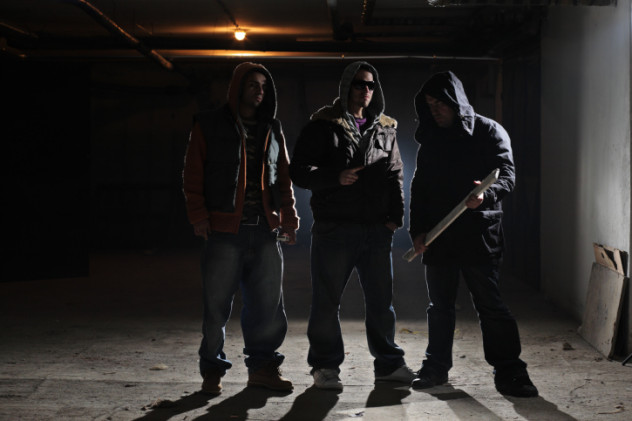
In 1979, three brothers named Linwood Earl Briley, Anthony Ray Briley, and James Dyral Briley, Jr. carried out a deadly killing spree in Richmond, Virginia. When Linwood was 16 years old, he shot and killed an elderly woman named Orline Christian while she was hanging laundry in her backyard. The death was initially ruled a heart attack, but a murder investigation was opened after the wound was located in the back of Christian’s head, and Linwood confessed to the crime.
The first attack carried out by the Briley brothers and their accomplice, Duncan Meekins, occurred in March 1979, when they entered the home of William and Virginia Bucher and brutally victimized the couple. The brothers ransacked the house, tied up the Buchers, poured lighter fluid all over them, and lit them on fire. Luckily, William was able to save himself and his wife. However, over the next seven months, the brothers terrorized the city of Richmond and murdered at random.
The Briley brothers preyed on those who were scared by their presence. In 1979, they murdered 11 victims and have been suspected in 20 different cases. All of the murders were extremely violent, including blunt force trauma with a baseball bat, gunshot wounds, stabbing with scissors, and other forms of torture.
On October 19, 1979, the Briley brothers came across Harvey Wilkerson and his family. They approached Harvey and eventually convinced him to let them inside the house. After gaining access to the home, the brothers (and Meekins) murdered the Wilkerson family, including Harvey, his wife Judy Barton, Barton’s 5-year-old son, and their unborn baby. The bodies of the family weren’t discovered for three days, after which the brothers were arrested.
At their trial, Duncan Meekins testified against the Briley brothers. Linwood and James were given a death sentence, while Anthony received life in prison. On May 31, 1984, Linwood and J.B. Briley helped orchestrate a six-person prison escape from Virginia’s death row at Mecklenburg Correctional Center. During the escape, fellow inmates were forced to keep the Brileys from murdering and sexually assaulting prison staff. The brothers were captured 19 days later and returned to death row. After the escape, their executions were expedited, and the two brothers were put to death in 1984 and 1985.
4The Lewingdon Brothers
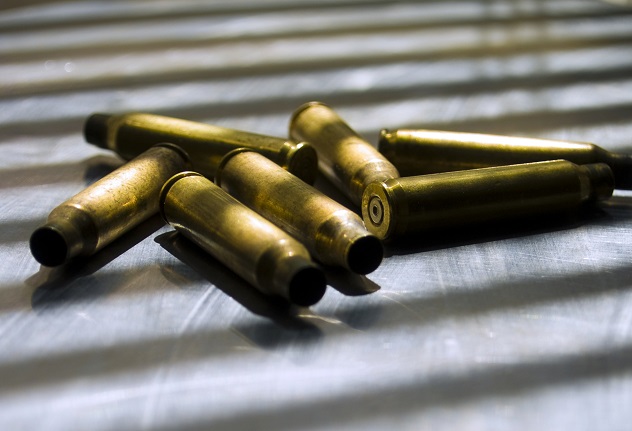
On December 10, 1977, two women were shot and killed after leaving the rear entrance of Forkers Cafe in Newark, Ohio. At the scene, the police discovered a collection of shell casings from a .22-caliber gun. Two months later, three people were found murdered in a house outside the city of Columbus, Ohio. The victims were shot multiple times in the head and face. At the scene, authorities discovered a collection of shells reminiscent of the previous murders in Newark.
In April 1978, an elderly man named Jenkin T. Jones was killed in his house just outside of Granville, Ohio. He was shot six times and the police found evidence for a .22-caliber weapon. The shells were taken to the lab, and the police found a ballistic match for the different murders. They concluded that there was a serial killer on the loose. The media labeled the perpetrators as the .22 Caliber Killers and a $16,000 reward was offered for information leading to an arrest.
On December 4, 1978, a 56-year-old man named Joseph Annick was fatally shot in his garage, and police received a break in the case when a worker noticed that Annick’s stolen credit card was used. The purchase was made by a 38-year-old man named Gary Lewingdon. After being interrogated by the police, Gary admitted to killing Annick. He also implicated his brother, 42-year-old Thaddeus Lewingdon, in several crimes.
Thaddeus was arrested and confessed to taking part in a series of murders with his brother. He told police that the pair would select a victim at random and shoot them with a .22-caliber pistol equipped with a homemade silencer. At the trial, Gary was found guilty of eight counts of murder and was sentenced to eight consecutive life terms. Thaddeus received six life terms. After their imprisonment, neither brother talked to the media about their motive in the murder spree. In April 1989, Thaddeus died of lung cancer, and Gary followed him in 2004.
3The Mailoni Brothers

In April 2007, three brothers named Mika, Fabian, and Stefan Mailoni went on a murder spree in Luano Valley, in the Mkushi District of Zambia. The motive behind the event is unclear, but the brothers soon felt the heat for the crimes. In 2012, the government of Zambia was forced to send troops to the area to hunt down the killers. The Mailoni brothers murdered people at random with primitive weapons, such as spears and bows.
The brothers took advantage of their extensive knowledge of the surrounding terrain to evade the police, and the political leaders of the Luano Valley were under intense pressure to apprehend the killers. During the lengthy manhunt, the brothers’ mother was forced to flee her house after an angry mob burned it down and threatened to kill her. She later explained that her sons’ strange behavior began after they visited a witchdoctor, sparking speculation that the brothers were cursed.
In June 2013, the Mailoni brothers were gunned down by a team of Zambia Army Commandos. Their bodies were put on display and photographed. After the news was made public, the citizens of the Luano Valley were finally able to return home after fleeing in fear of the violence.
2The Shen Brothers

Two of the most notorious brothers are Shen Changyin and Shen Changping. The Shen brothers grew up on a farm in the province of Henan, China, after which they started an auto parts business in Lanzhou. However, the company soon failed and they turned to murder to make money. In September 1999, Shen Changyin committed his first murder in Huojia County.
In 2003, the Shen brothers stepped up their game and began murdering women found at nightclubs and bath houses. The first victim was a prostitute named Yao Fang, who was taken captive and forced to provide her bank account information. After the brothers stole her money, they strangled Yao and dismembered her body. Over the next two years, the Shen brothers traveled around China and killed a total of 11 women. During the rampage, they used the help of female accomplices and forced victims to participate in their crimes. The brothers disposed of the bodies by burning them with sulfuric acid and flushing them down the toilet. They were also known to cannibalize their victims, having a particular taste for their kidneys.
After receiving a tip in 2004, the police entered the brothers’ house in Shijiazhuang, Hebei and discovered a collection of dismembered corpses, body parts, stolen bank cards, cash, jewelry, and tools. The brothers were discovered in the process of pouring acid over a dismembered corpse. After being interrogated by the police, they confessed to the murder spree. In 2005, the Shen brothers and one of their female accomplices, Li Chunling, were sentenced to death.
1The Gonzalez Sisters

There are very few cases in history of sisters who collaborate to kill, but one such instance is the story of Delfina and María de Jesús González, known as Las Poquianchis. In the 1950s and ’60s, the sisters ran a large prostitution ring at Rancho El Angel, near the city of San Francisco del Rincón in Guanajuato, Mexico. To recruit new prostitutes, the sisters would regularly place job advertisements in the newspaper and kidnap those who responded. The victims were then tortured, sold into sexual slavery, and often murdered.
After being kidnapped by the sisters, most of the girls were force-fed drugs and became addicted. They were sold to madams at cheap prices and treated like prisoners. If the girls disobeyed, became sick, got pregnant, or lost attractiveness, they were murdered and buried at Rancho El Angel. The sisters often tortured the girls to get them to comply.
In 1964, three victims of the Gonzalez sisters escaped and alerted authorities to the crimes. The police searched the grounds of Rancho El Angel and discovered the remains of 80 women, 11 men, and several fetuses. It was eventually revealed that the sisters were responsible for the deaths of many migrant workers and wealthy customers in addition to their sex slaves.
The Gonzalez sisters briefly evaded police, but they were eventually captured and placed on trial for the murders. The sisters were found guilty of the crimes and given a maximum sentence of 40 years in prison. Delfina died in jail, while Maria served her sentence and disappeared. At their trial, it was revealed that a large number of people were connected with the crimes, including sisters Carmen and Maria Luisa.


![10 Creepiest Photos Of Victims Taken By Serial Killers [DISTURBING] 10 Creepiest Photos Of Victims Taken By Serial Killers [DISTURBING]](https://listverse.com/wp-content/uploads/2018/09/Regina-Kay-Walters-featured-2-150x150.jpg)
